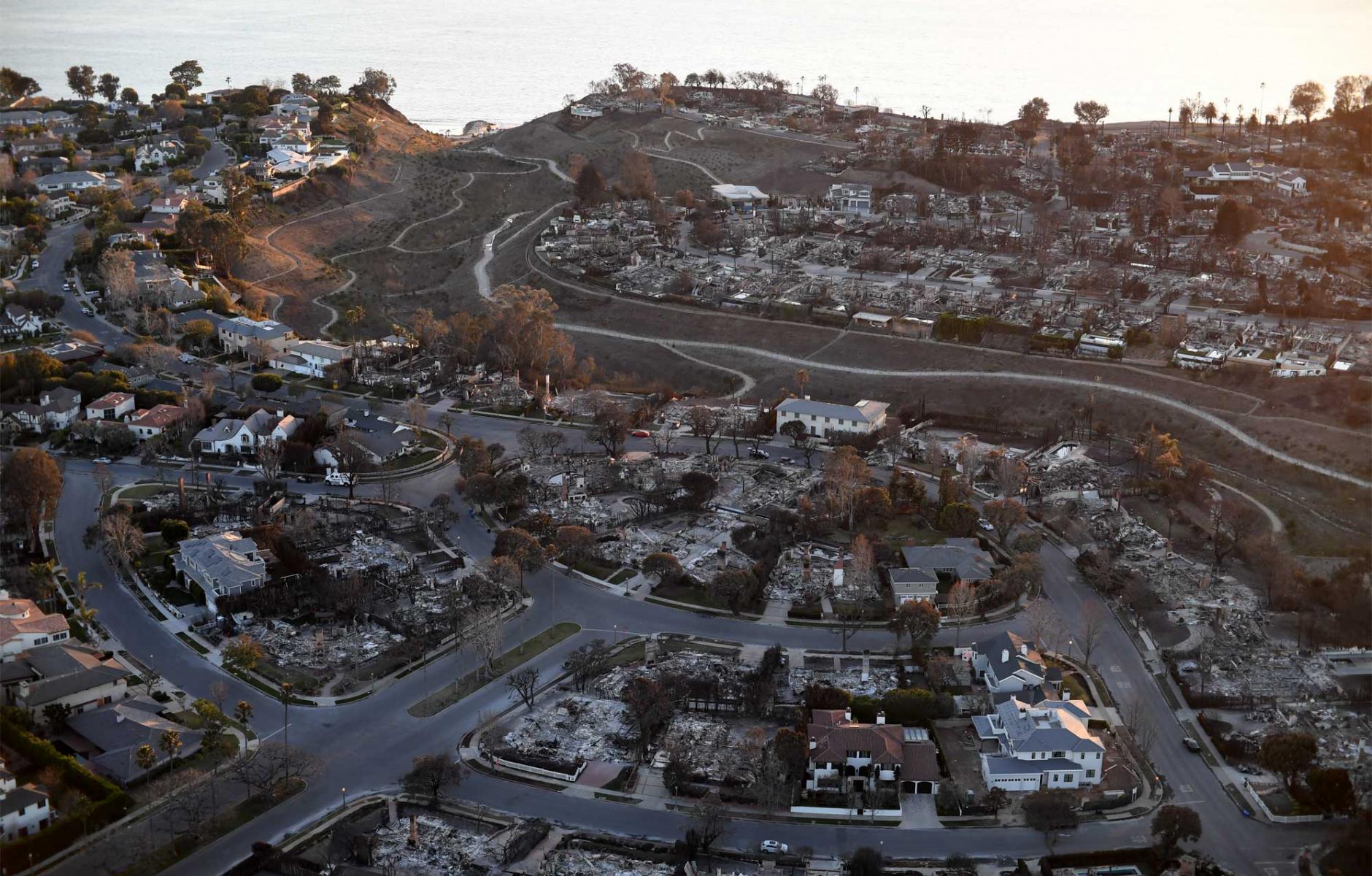
New urbanists must have a voice in LA fire recovery
A former FEMA director said the recent LA fires are the city’s “Hurricane Katrina.” That’s probably true, but new urbanists are unlikely to play a similar role that they did in 2005 when they led the Mississippi Renewal Forum to replan the entire Gulf Coast of the state.
The situations are far different—in 2005, new urbanists were invited by the governor to lead the planning. No such invitation is forthcoming today, and many groups are already active in LA recovery planning, yet new urbanists can still have a powerful voice in the effort, Neal Payton of Torti Gallas’s West Coast office said in an On the Park Bench webinar on Wildfire Planning and Recovery. Also joining were Kate Blystone, planning director of Maui County, Hawaii, the site of the 2023 Lahaina Town fire; and Barry Long of Urban Design Associates (UDA), which worked with Paradise, California, on a recovery plan for the 2018 Camp Fire.
Ideas in the Charter of the New Urbanism—e.g., neighborhoods should be compact, walkable, mixed-use, with a broad range of housing types, and buildings should provide for the physical definition of streets and public spaces—“should be guiding principles for whatever happens in [in rebuilding] Altadena and Palisades,” Payton says. Walkable places are healthier for residents and reduce carbon emissions.
In Paradise, the city is implementing a walkable downtown, which was lacking before the fire, supported by land-use code reforms. New bike-walk trails connect residential areas and provide secondary emergency access routes, Long says. The city is building a more connected street network, because most fatalities occurred on long, dead-end roads. Connected street networks have multiple health and safety benefits.
Most of Lahaina was built before zoning, but the city has become car-centric over time. The goal is to rebuild a walkable community and solve some of the problems that have resulted from car culture being imposed on a downtown built for walking, Blystone says. “The biggest thing grappling with is parking. We need to look at the parking code,” she says.
Thousands of single-family houses were destroyed in LA, but also 374 commercial buildings—including a loss of smaller, missing-middle apartments, Payton reports. The downtowns of Pacific Palisades and Altadena were destroyed—but what remains are finely grained lots and ownership patterns. These invisible lines cannot be erased and will resist change, Payton says. What can change are the codes, he says. “We could begin to create a more diverse walkable community by putting parking behind, bringing the building closer to the street, creating a public realm along the sidewalks with landscaping, and creating more than two stories of buildings,” he says. Even these changes may be difficult given the California regulatory environment—but new urbanists should fight for them.
Worth resisting are efforts to widen streets to make it easier for large fire trucks—because that will put children and vulnerable populations at risk of death by automobile crashes. There are better ways to provide access, Payton and Blystone note—including better-connected street networks and the use of smaller trucks like fire companies in cities like Boston.
The pressure is intense to allow residents to rebuild quickly, and this would seem to conflict with plans to build back better. But that may be less of a conflict than it would appear, the panelists note. It takes a long time to build back a town, especially in downtown areas with little immediate demand for commercial development. More than six years after the Paradise fire, UDA is working on a downtown plan for the city. Despite the best intentions and a strong desire, Paradise is only about a quarter rebuilt in six years, Long notes.
This “natural slowness” of some aspects of rebuilding means that new urbanists can support expedited rebuilding efforts where appropriate but also count on time for long-term planning—especially in mixed-use areas. Zoning reform is one obvious step that can be taken, especially since the current zoning probably doesn’t allow for the rebuilding of commercial buildings in demand today. There will be pressure to change the codes, Payton says.
Changing building codes will be a bone of contention, the panelists note. Fire-resistant building materials may be the most important future fire-protection measure, but affordability concerns may win out, the panelists note. Planning on the regional scale for a fire break is also an important measure, but may not be enough to stop a fire. Both Blystone and Long emphasized the importance of public participation in the plan. “You move at the speed of trust,” Blystone says.
She also emphasized that disaster recovery will be part of the jobs of most planners going forward. “Climate change is real and happening, and the effects of it will be the focus of planners and urbanists for generations,” she says.
So many important topics were covered by these planners. I recommend seeing the whole video.




